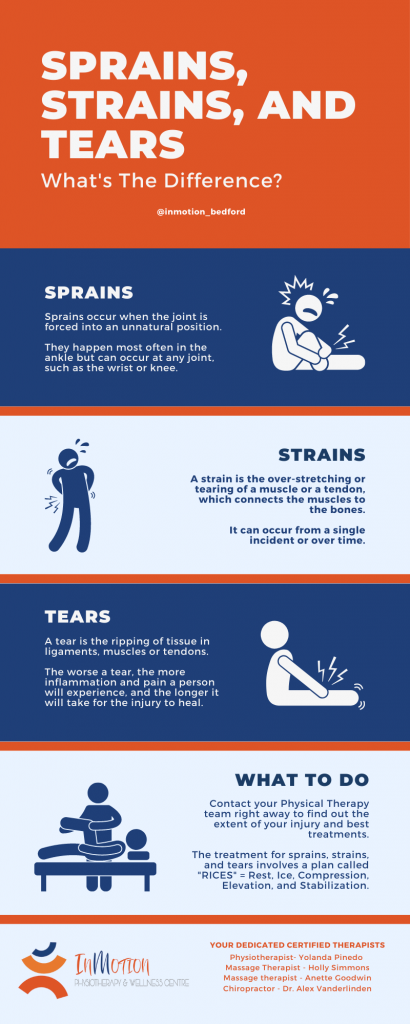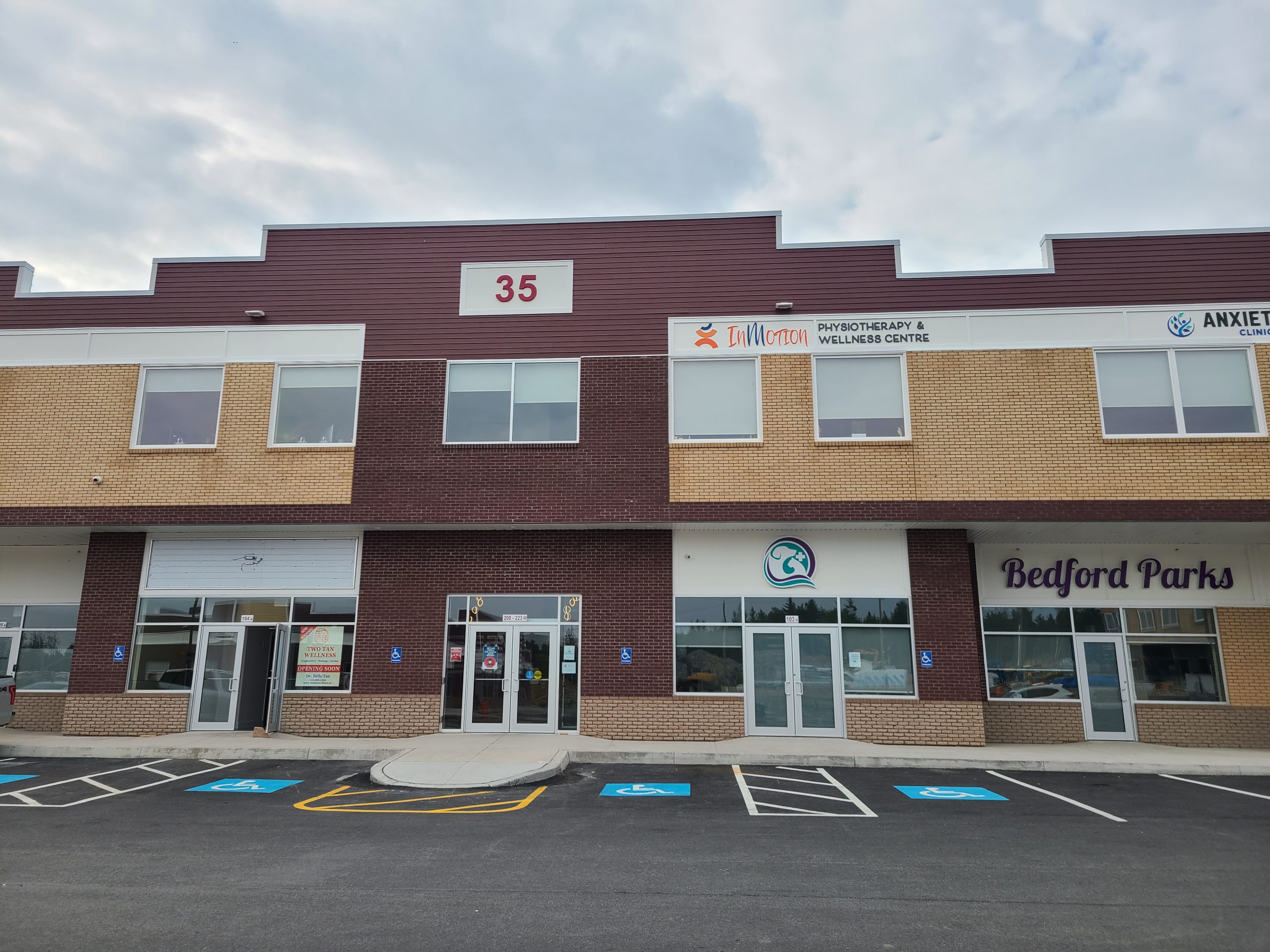At InMotion Physiotherapy & Wellness Centre physiotherapy treatments are commonly used to treat injuries that are the result of sports-related activities.
Sports injuries occur when a person’s body is overwhelmed by the stress of physical activity. The cause could be a sudden and powerful force from another athlete, from the actions of rapidly changing direction, or perhaps tripping and falling. Repetitive strain sports injuries often develop over time by repeatedly doing or repeating an action that adds to the stress on your joints and muscles. Some sports carry greater risks for injury than others.
Most Common Sports Injuries
The most common sports injury seen by physiotherapists is a sprain or strain to a muscle or ligament. Sprains and strains can happen in all parts of the body, but they occur most often in the foot, ankle, knee and elbow. A sprain is an injury to a ligament – the band of fibrous tissue that connects two bones at a joint – and a strain is an injury to a muscle or tendon – the cord of tissue that attaches muscles to bones.
Wondering what the difference is between Sprains, Strains, and Tears? Check out our infographic below:

How does Physiotherapy Help with Sports Injuries?
Physiotherapy can often be the best treatment for most sprains, strains, and other types of sports injuries. The goal of PT is to reduce pain, increase your mobility and help you get back to your sport or activity as soon as you safely can.
A physiotherapist can work with you to determine the right level of activity for your specific condition. He or she will also teach you exercises that can help strengthen injured muscles and improve flexibility in injured joints.
Sore Muscles after a Sports Injury
Sore muscles are a common result of a sports injury, especially when you have overworked them through a repetitive activity without warming up first.
How Can I Heal My Sports Injury Faster?
Soreness after a sports injury is normal and is just an indication that your body needs to rest and that you need to move fresh blood into damaged muscle fibers. Muscle soreness is the result of microscopic tears in muscle fibers that result from repetitive activity. While most sore muscles usually subside within a week, they can linger for up to 10 days if precautions aren’t taken. The severity of muscle soreness depends on how severe the injury was and whether or not the body has adequate rest, fluid intake and nutrition. To alleviate muscle pain caused by sports injuries, make sure to keep active with non-impact activities until you resume your normal exercise routine.
How Physiotherapy Helps in Treatment of Sports Injury
Once you are evaluated, your physiotherapist will determine what type of treatment is needed for your injury. Treatment options may include:
- Manual therapy to reduce pain and inflammation.
Gentle pressure to parts of your body to help improve blood flow and relieve pain. This therapy can be applied to the injured area itself, or your therapist may use it to help relax your muscles in an effort to prevent further injury. Your therapist may use manual therapy techniques, such as pressure massage or joint manipulation, to treat specific areas of pain or dysfunction to reduce pain and inflammation.
- Moving and positioning exercises designed by your physiotherapist help you regain motion and strength in injured joints. Your therapist will work with you to design a home exercise program that fits into your schedule. He or she may recommend exercises you can do while at work or other activities that are safe for your condition.
- A rehabilitation program can guide your recovery from a sports injury. It will involve a mix of therapy and exercises to help improve your strength and motion in injured areas. A rehabilitation program can be used in conjunction with a splint or cast, or it may extend beyond the time you need to use these devices.
For more information about how we can help you heal from your sports injury, contact us at InMotion Physiotherapy & Wellness Centre.







